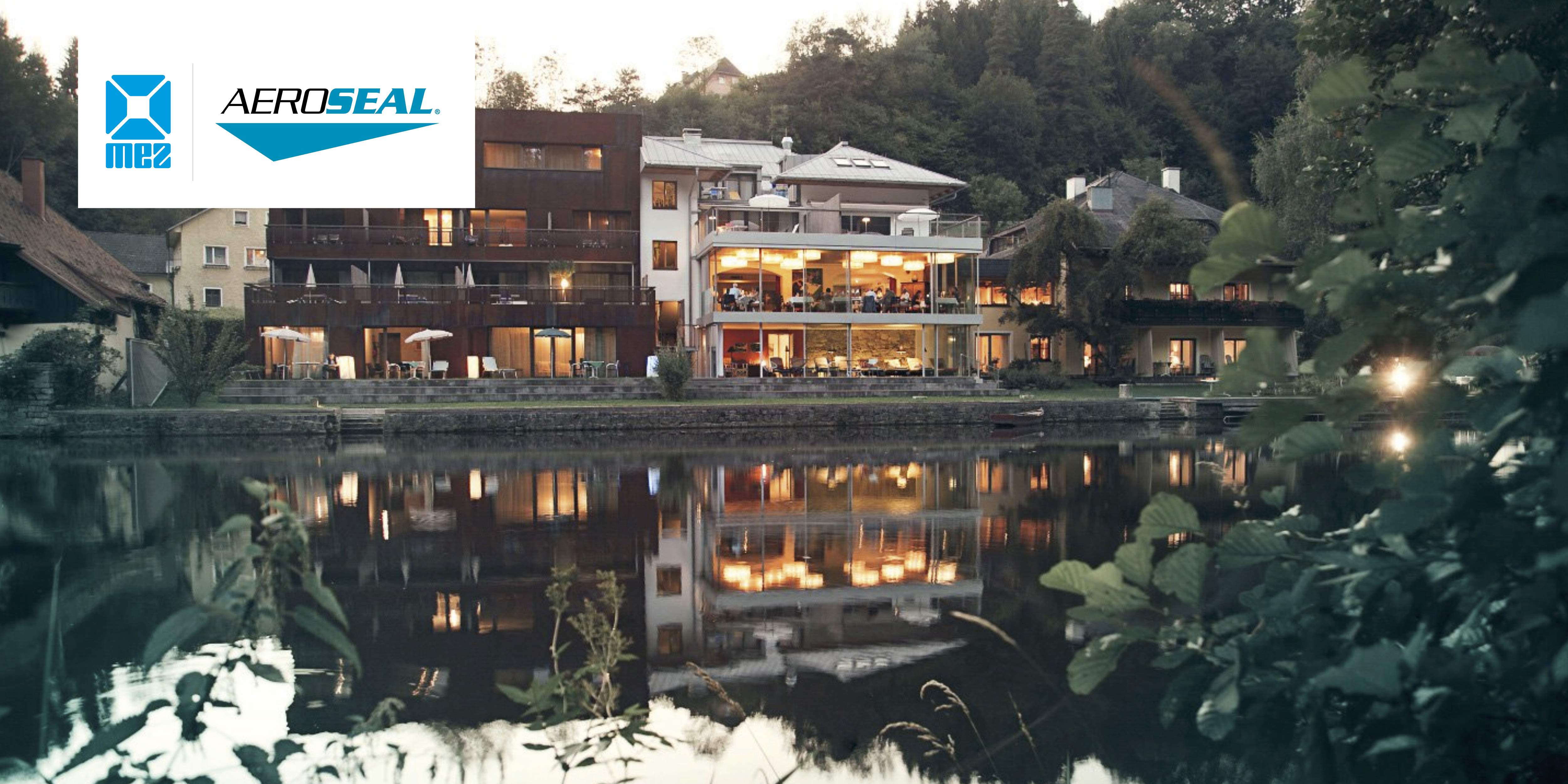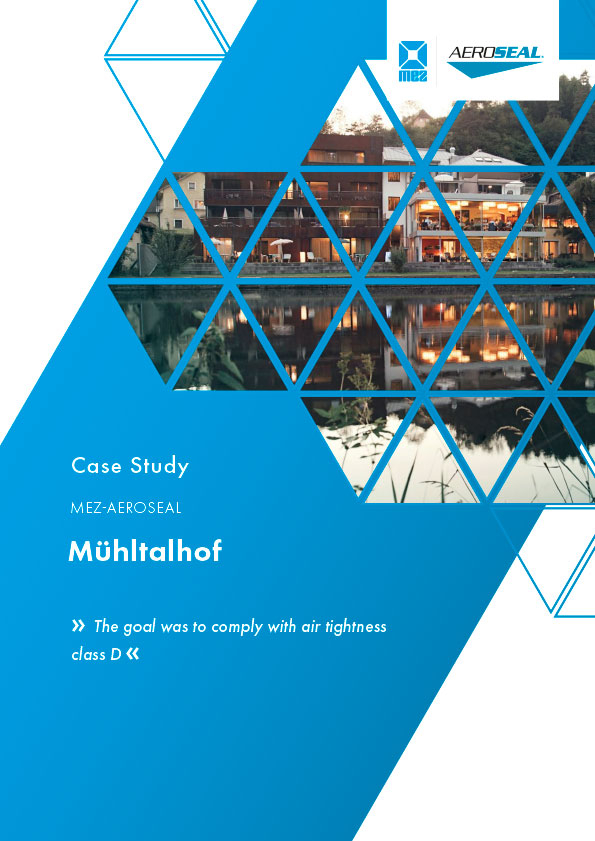Mühltalhof

With 44 beds, cosmetics and relaxation area on the riverbank, sanarium, sauna, steam bath, shiatsu and hot stone treatments, curling and ice skating on the Great Mühl, the mix of tradition with creative design and much more, the Mühltalhof in the Upper Austrian Mühlviertel offers an experience for tourists, art and nature lovers. And gourmets also get their money‘s worth: under the motto „Every good evening ends in the kitchen. With us, it starts right there.“ Philip and Helmut Rachinger combine sustainable regionality with creativity in the three-hood restaurant (Gault Millau).
PROJECT
Building: Mühltalhof
City: Neufelden, Austria
Date: December 2020
AEROSEAL Partner: Aeroseal Austria GmbH
Executing company: Pöttinger Installations GmbH
Preseal leakage: 24,3 l/s
Postseal leakage: 0,75 l/s
Reduction of leakage: 96,9%
PROJECT COURSE
In the course of renovation work in the Drei-Hauben restaurant (Gault Millau) of the Mühltalhof, among other things the kitchen ventilation was renewed. Since the ventilation unit was installed on the roof above the kitchen and the air duct system was installed on the roof structure, a building physicist placed very high demands on the air tightness of the air ducts. Due to limited accessibility when installing the air ducts, not all connections could be properly connected and resulted in a leakage rate of 24.3 l/s. For this reason, Pöttinger Installations GmbH, which was commissioned with the ventilation work, decided to have Aeroseal Austria GmbH seal the air duct system afterwards. For this purpose, Pöttinger Installations GmbH sealed the openings of the air duct systems at the ventilation unit and the kitchen ventilation ceiling on all sides with metal sheets. The sealing device was installed by Aeroseal GmbH on the 1st floor, from where the sealing device was connected to the exhaust air line in the area of the ventilation unit. By injecting the finely atomized sealant, the Aeroseal process was able to reduce the amount of leakage by 96.9% to just 0.75 l/s, thus easily achieving the desired result, an air tightness class D.


